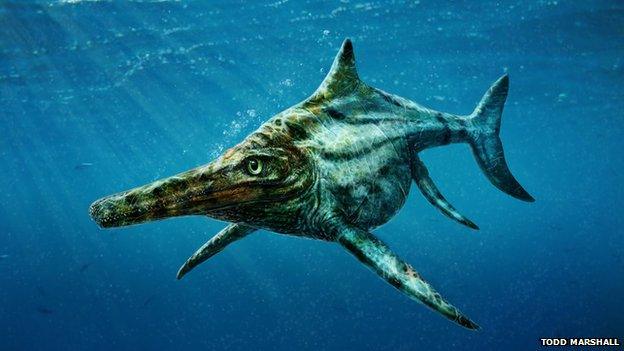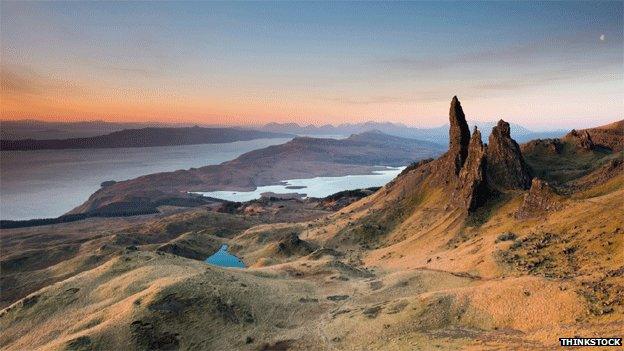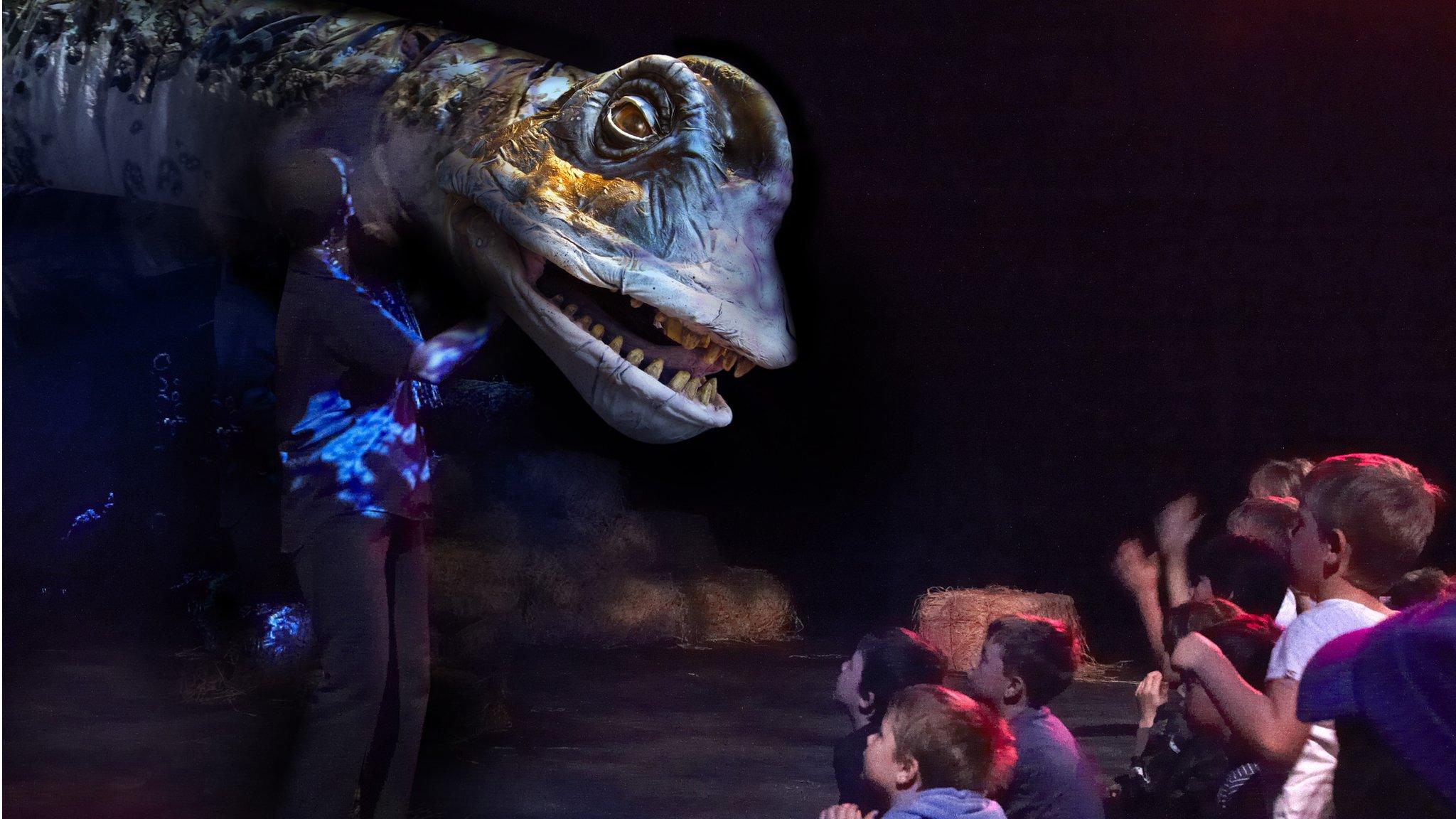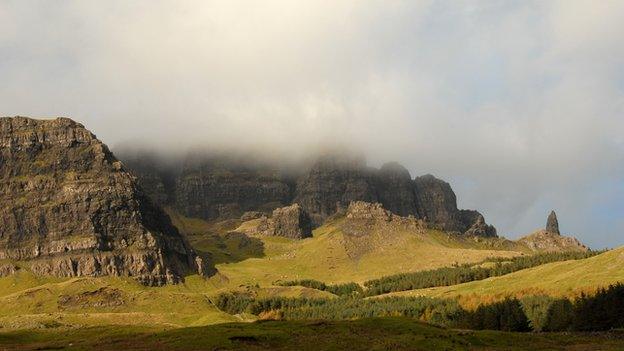New species of marine reptile identified from Skye fossils
- Published

Palaeontologists have given the new creature a Gaelic name
A new species of marine reptile that lived about 170 million years ago has been identified from fossils found on the Isle of Skye.
Measuring 14ft (4.2m) from snout to tail, it hunted fish and other reptiles in warm shallow seas around Scotland during the Jurassic Period.
Palaeontologists said they had given it a Gaelic name, Dearcmhara, to reflect its connection with the Hebrides.
Work to identify it was led by the University of Edinburgh and museums.
A team of palaeontologists studied fossil fragments of skulls, teeth, vertebrae and an upper arm bone unearthed on Skye over the past 50 years.
They identified several examples of extinct aquatic animals - known as ichthyosaurs - which lived during the Early to Middle Jurassic, including the entirely new species.
The species is named Dearcmhara shawcrossi after a Gaelic lizard and Brian Shawcross, the collector who found the fossil in 1959
Dr Steve Brusatte, of the University of Edinburgh's School of GeoSciences, who led the study, said: "During the time of dinosaurs, the waters of Scotland were prowled by big reptiles the size of motor boats.
"Their fossils are very rare, and only now, for the first time we've found a new species that was uniquely Scottish."
He added: "Without the generosity of the collector who donated the bones to a museum instead of keeping them or selling them, we would have never known that this amazing animal existed."

Skye is one of the few places in the world where Middle Jurassic fossils have been found
The work was carried out by a consortium involving the University of Edinburgh, National Museums Scotland, the University of Glasgow's Hunterian Museum, Scottish National Heritage and Skye's Staffin Museum.
Dr Nick Fraser, of National Museums Scotland, said: "Not only is this a very special discovery, but it also marks the beginning of a major new collaboration involving some of the most eminent palaeontologists in Scotland.
"It has brought together key organisations, local collectors on Skye and specialists from further afield. We are excited by the programme of work and are already working on additional new finds."
The study is published in the Scottish Journal of Geology.
The hand-beast
During the Jurassic Period, much of Skye was under water and today is one of the few places in the world where fossils from the Middle Jurassic Period can be found.
Other important fossil finds have been made on the Misty Isle.
In 2008, scientists revealed that the earliest turtles known to live in water had been discovered on the island.
The 164 million-year-old reptile fossils were found on a beach at Cladach a'Ghlinne, on the Strathaird peninsula in southern Skye.
The new species formed a missing link between ancient terrestrial turtles and their modern, aquatic descendants.
The fossils include more than 100 marks left by a lizard called Isochirotherium - also known as the hand-beast - 270 million years ago.
- Published21 May 2014

- Published28 September 2013

- Published10 May 2013
